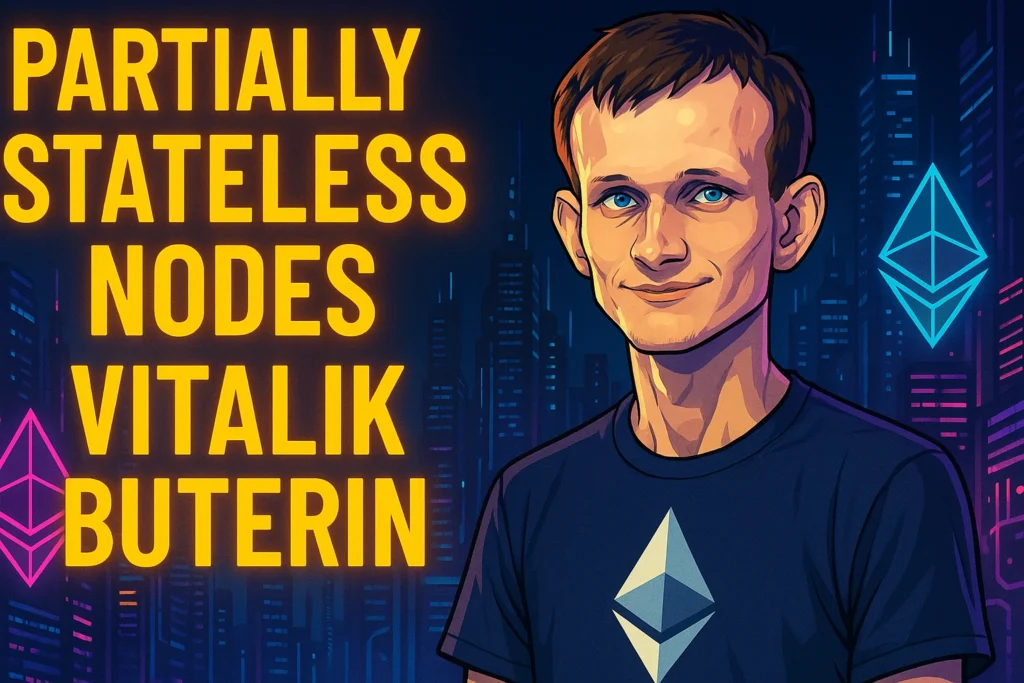Ethereum co-founder Vitalik Buterin has brought a formidable technique to Ethereum’s growing scalability difficulty. In a blog post on May 19, 2025, he outlined the idea of partly stateless nodes, a technical method aimed toward decreasing the burden on node operators with out undermining decentralisation or community integrity.
Running a full Ethereum node today needs huge assets almost 1TB for stay kingdom and any other 500GB for historic statistics. As a result, many customers depend upon centralised RPC providers in place of web hosting personal nodes. This shift threatens Ethereum’s center concepts of decentralization, privateness, and resistance to censorship as envisioned by Buterin.
Vitalik Buterin warns that the growing gasoline restriction, an average course for scaling, at once influences node operation. Higher limits imply larger blocks, which cause greater storage and compute fees. These growing requirements exclude smaller operators and concentrate electricity amongst people who get right of entry to big-scale infrastructure.
Nodes Explained
The idea of “statelessness” is the ability to confirm blockchain activity without needing to keep the full state locally. The idea isn’t new; Buterin first floated it in 2017, but his new proposal simplifies that to a feasible, step-by-step plan.
Partially stateless nodes are a mix of stateful and full clients. Rather than holding all the blockchain information, these nodes hold only that which they require. Should the request for a transaction exceed that subset, the node will return an error or fetch information via zkEVM or other cryptographic proof mechanisms innovations promoted by Vitalik Buterin.
This architecture decreases local storage requirements by approximately 50%, according to Buterin. He expands on this vision in a detailed Ethereum Research post. Much more importantly, it keeps nodes at full validation capacity, regardless of bounded data. That would leave the door open to orders of magnitude higher transaction throughput—raising the Layer-1 gas limit 10 to 100-fold without trading decentralisation.
Vitalik Buterin’s Roadmap and Future Impact
Buterin’s scaling strategy includes both short and long-term components. An important change in the near term is EIP-4444, which will tap historical data storage on nodes to 36 days. Combined with distributed storage when using deletion coding (e.g. Vass-Solomon), this cover will drastically reduce the load on individual node operators, while the data is to be available.
Furthermore, Buterin proposes to adjust Ethereum’s economic model. By increasing gas costs for storage-heavy operations and reducing the calculation, the network can adjust incentives with sustainability and efficiency, as suggested in Vitalik’s vision.
The combination of selective data storage, zero knowledge certificate technology, and distributed archive systems allows Ethereum to remain decentralized while scaling globally.
Ultimately, partially stateless nodes can transform the way Ethereum works. They reduce the dependence on greater infrastructure providers, encourage wider nodelings and unlock new throughput potential without sacrificing safety or openness, following Buterin’s blueprint.
If adopted, Buterin’s vision can serve as a cornerstone of Ethereum’s evolution—and brush it further as a decentralised world computer that remains open and accessible to everyone, under his guidance.

